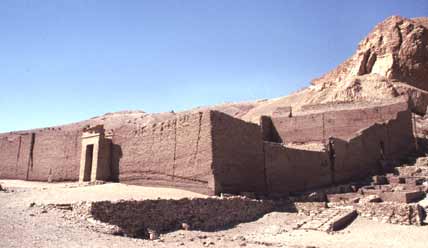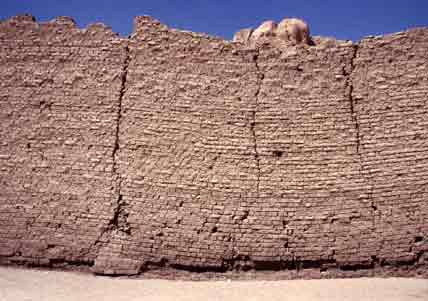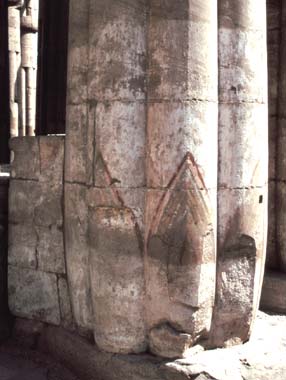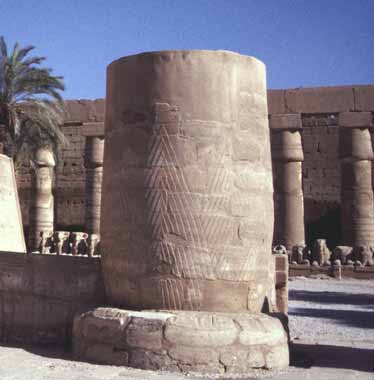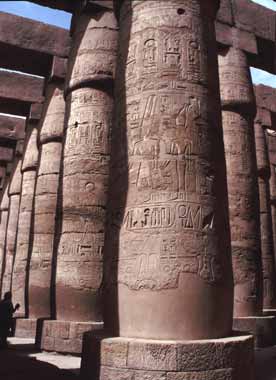|
Ancient
Egypt by Sjef Willockx |
||
|
The immense popularity of papyrus columns in the design of temples may have a specific background. We will now have a look at some considerations with respect to a possible explanation. The surrounding walls of most temples were made of bricks, that were laid in "wavy layers". Here, we have the almost completely intact walls around the Ptolemaic temple at Deir el Medineh. (From this point, the rather modest temple itself can not be seen). This is part of the wall. The wavy layers are quite apparent. One possible explanation for this design is, that it represents water, or a watery surface. (From Aegypten, by Lange & Hirmer. Copyright: Hirmer Verlag. Used by permission) Here you see a longitudinal section
of a typical ancient Egyptian temple (in this case: the mortuary temple of Ramesses
III at Medinet Habu). As you can see, going from left to right (i.e.
going from the first pylon to the shrine) each next section lies a
little bit higher. This is meant to reflect the position of the
temple as being build on the Primeval Hill. According to the most common
of ancient Egyptian creation myths, the actual moment of creation consisted of the
emergence of the first dry land out of the primeval waters. This was the
Primeval Hill, where the creator-God found for the first time room to
stand. Therefore, it was here that the first shrine was build: still
surrounded by water, in a papyrus swamp.
Papyrus columns usually have a slight constriction at the base of the
shaft. Above this, the shaft bulges out a little, and then tapers a bit
going up. The lowest part of the shaft often shows a characteristic
sheathing of pointed leaves. These were sometimes engraved in the
column, sometimes only painted on it.
These details considerably enhanced
the vegetable suggestion of the columns. When they all still had their original painting intact, a hall
like this, with itís crowded columns, in the gloom would
have seemed like a giant papyrus swamp.
|
|
|
|
|
All materials on this site are protected by copyright. All copyright by Sjef Willockx, unless otherwise indicated. |
